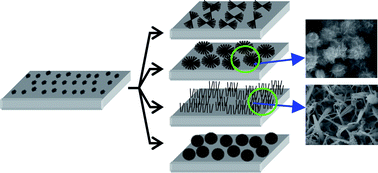Facile synthesis of nanostructured hydroxyapatite–titania bio-implant scaffolds with different morphologies: their bioactivity and corrosion behaviour
Abstract
A facile synthesis to fabricate

* Corresponding authors
a
Colloids and Materials Chemistry Department, Institute of Minerals and Materials Technology (CSIR), Bhubaneswar, India
E-mail:
yschaudhary@gmail.com
Fax: +91-674-258 1637
Tel: +91-674-258 1635 ext. 248
b Central Mechanical Engineering Research Institute (CSIR), Durgapur, India
c Indian Institute of Toxicology Research (CSIR), Lucknow, India
A facile synthesis to fabricate

 Please wait while we load your content...
Something went wrong. Try again?
Please wait while we load your content...
Something went wrong. Try again?
S. Nayak, B. Satpati, R. K. Shukla, A. Dhawan, S. Bhattacharjee and Y. S. Chaudhary, J. Mater. Chem., 2010, 20, 4949 DOI: 10.1039/C0JM00241K
To request permission to reproduce material from this article, please go to the Copyright Clearance Center request page.
If you are an author contributing to an RSC publication, you do not need to request permission provided correct acknowledgement is given.
If you are the author of this article, you do not need to request permission to reproduce figures and diagrams provided correct acknowledgement is given. If you want to reproduce the whole article in a third-party publication (excluding your thesis/dissertation for which permission is not required) please go to the Copyright Clearance Center request page.
Read more about how to correctly acknowledge RSC content.
 Fetching data from CrossRef.
Fetching data from CrossRef.
This may take some time to load.
Loading related content
